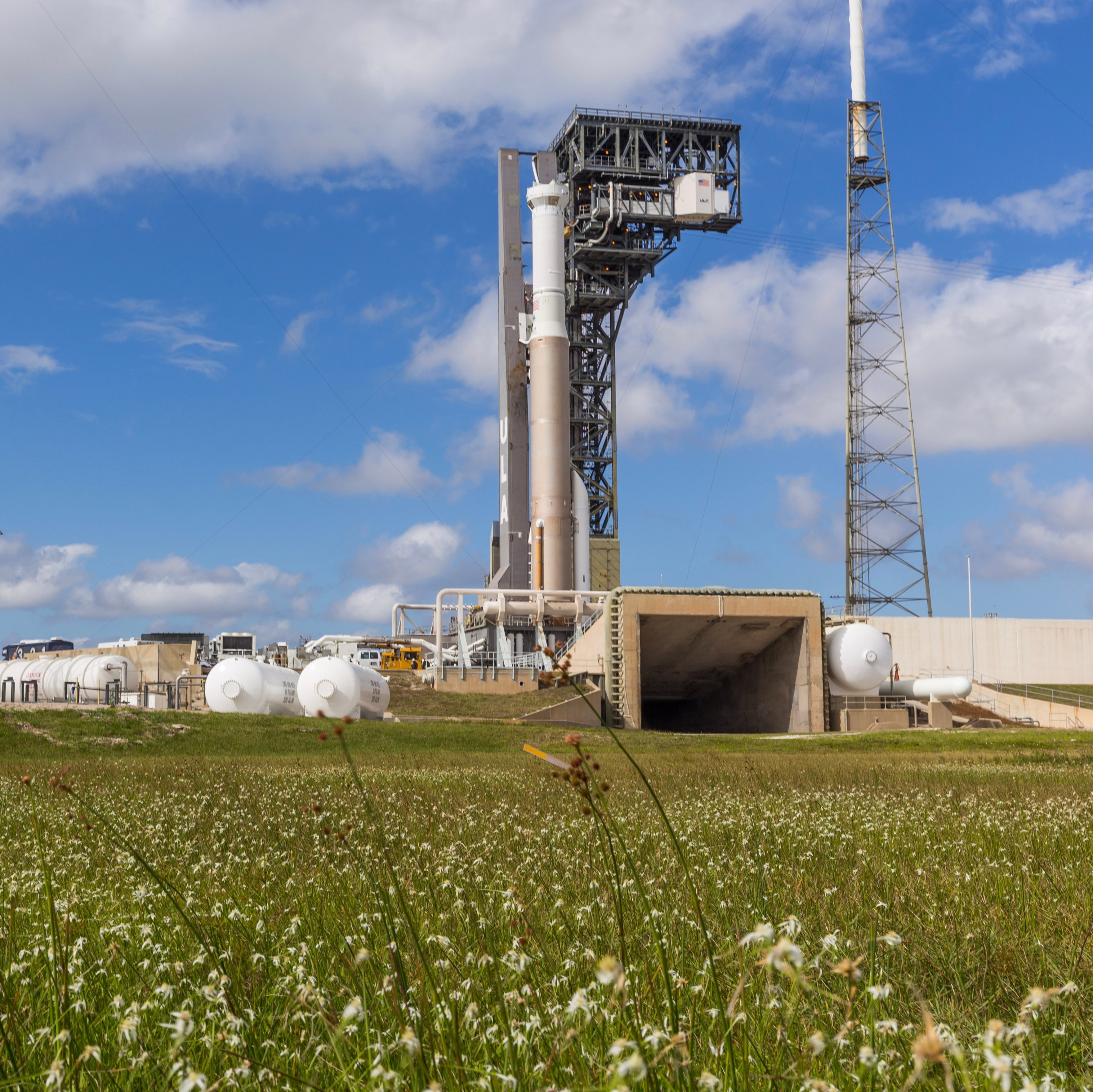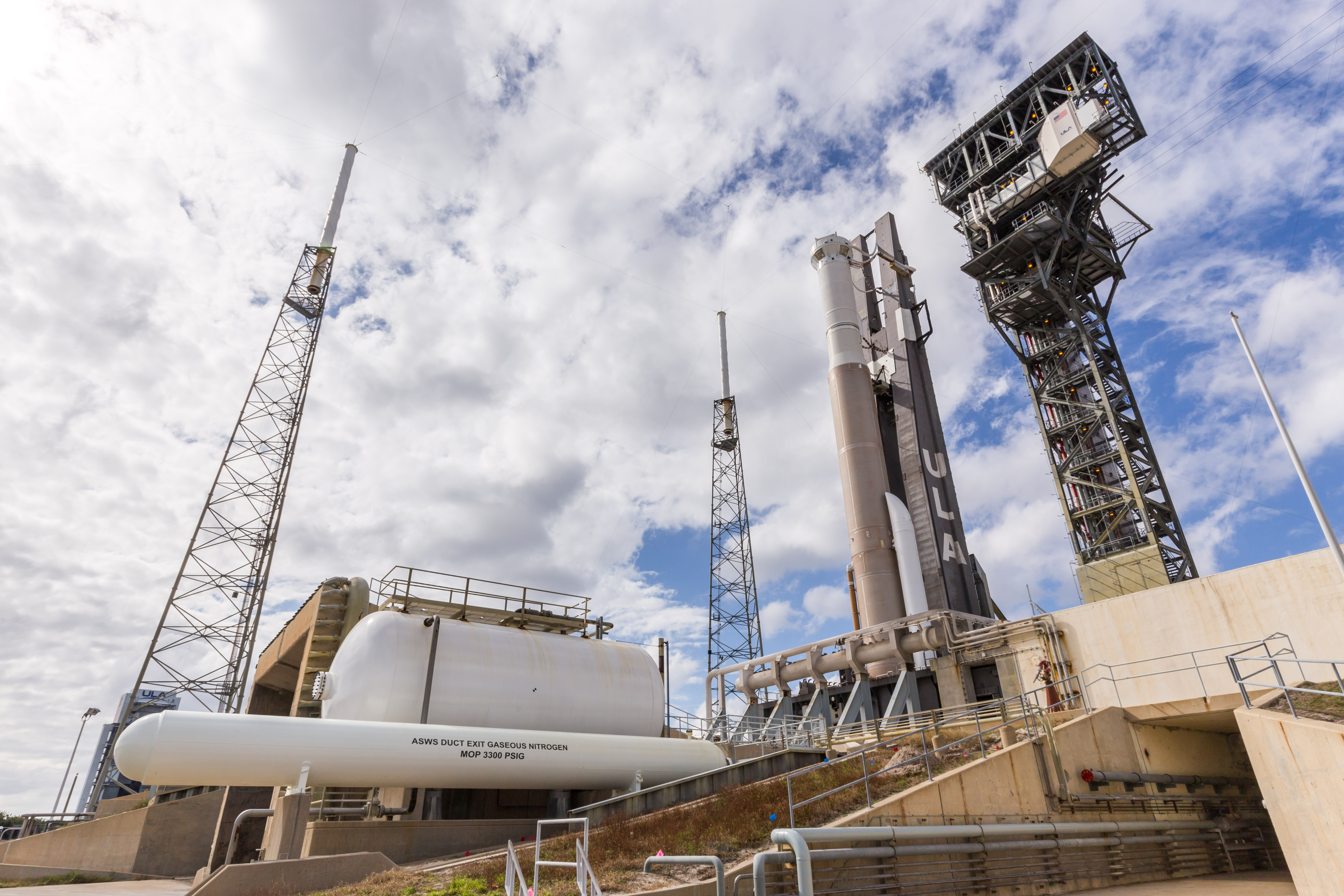The United Launch Alliance Atlas V rocket has achieved a major milestone in preparation to launch Solar Orbiter on Feb. 7 for a mission to explore the uncharted polar regions of the sun.
Known as a Wet Dress Rehearsal (WDR), teams from ULA and NASA this past week successfully completed the test that demonstrated the rocket's rollout and day-of-launch countdown operations at Cape Canaveral Air Force Station, Florida.
The assembled rocket, minus the payload, was transported aboard the Mobile Launch Platform (MLP) from the Vertical Integration Facility (VIF) to the launch pad at Space Launch Complex-41 on Tuesday, Jan. 21.
After reaching the pad, the first stage was loaded with its flight supply of 25,000 gallons of RP-1, a highly refined kerosene. That fuel will remain inside the rocket through launch day, a standard practice for Atlas rockets that undergo a WDR.
The countdown, on Wednesday, Jan. 22, was initiated just before dawn under the control of ULA Launch Conductor Scott Barney and his team of console operators stationed in the Launch Control Center at the Atlas Spaceflight Operations Center.

The rocket stages were powered up, guidance system testing conducted and final preps to ground systems accomplished, enabling ULA Launch Director Lou Mangieri to give approval for cryogenic tanking.
But just prior to the start of fueling, a duct supplying cooling to the rocket's avionics compartment became detached. That necessitated a rollback to the VIF for corrective actions and return to the launch pad.
Countdown clocks were restarted on Friday, Jan. 24, as the launch team configured the Atlas V rocket for cryo loading. About 66,000 gallons of liquid oxygen and liquid hydrogen filled the rocket's tanks using the same procedures that will be executed on the actual launch day.
Mangieri, with input from NASA Launch Manager Tim Dunn, confirmed readiness to enter terminal count at T-minus 4 minutes. The final phase of the countdown progressed smoothly with all planned activities completed through the scheduled cutoff point just prior to ignition.
The rocket was safed and cryogenic tanks drained to conclude the test. The rocket was returned to the VIF on Saturday, Jan. 25 after the hardware warmed up and the MLP could be disconnected from the pad facility. Solar Orbiter is scheduled to arrive at the VIF next week for hoisting atop the Atlas V to produce a 189-foot-tall rocket for launch.
WDRs are milestones meant to mitigate any issues before the actual launch day arrives. Typically, they are performed during the launch campaign for all planetary missions that have very short timeframes to launch. Missing that launch period would mean lengthy delays to wait for the next opportunity.
In the case of Solar Orbiter, it has a three-week window in February to launch when Venus and Earth are aligned to carry out the spacecraft's circuitous flight path that swings in and out of the inner solar system throughout decade-long sun-studying mission.
The repeated encounters with Venus with use the planet's gravity to alter Solar Orbiter's trajectory to achieve a vantage point to take the first-ever images of the sun's poles.
Solar Orbiter will address overarching questions in solar physics to help us understand how the sun creates and controls the giant bubble of plasma that surrounds our cosmic neighborhood and influences the planets within it.
Knowing how the sun influences interplanetary space is critical considering that society has become dependent on space for navigation and communications. Unraveling fundamental mysteries about the sun's activities will help all of humanity predict and adjust to these behaviors.

 Back To Blog List
Back To Blog List



